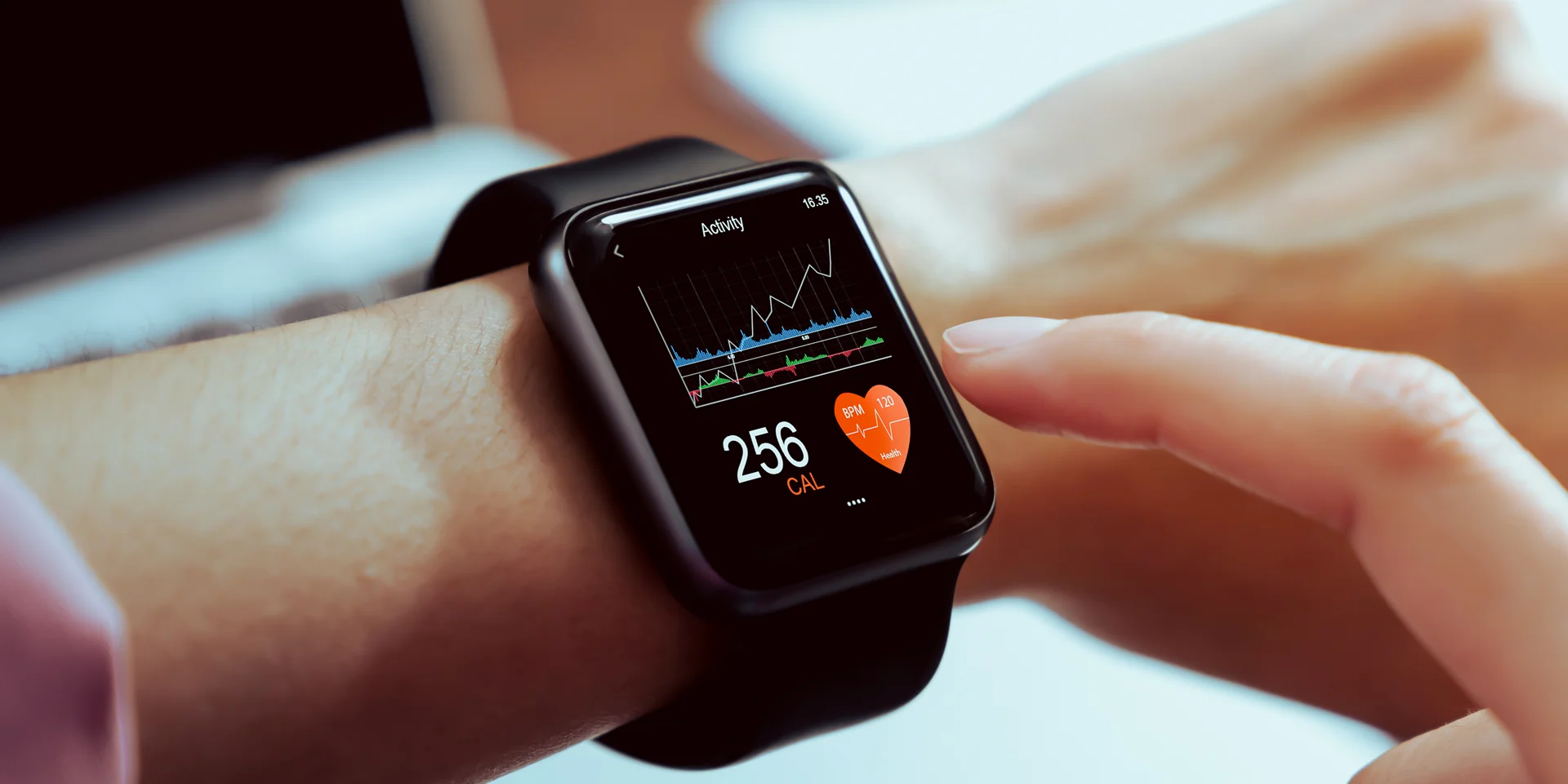Published on 12 February 2024
Is the smartwatch a health risk?
The world of wearables is constantly evolving. New products and new types of wearable technology come onto the market almost daily. An overview of the advantages and disadvantages of smartwatches and fitness trackers.
Constant connectivity
One of the outstanding features of smartwatches is their ability to be constantly connected to your smartphone. This allows you to receive notifications such as calls, messages and emails directly on your wrist without having to take out your phone.
Health monitoring
Fitness trackers and now also most smartwatches are equipped with sensors that monitor various health parameters such as heart rate, sleep quality and step count. These functions are particularly useful for people who want to track their fitness goals or monitor certain health conditions
Customised notifications
Smartwatches allow users to customise their notification settings and selectively choose which notifications they want to receive. This allows users to stay better organised during their daily routine without being distracted by unnecessary notifications.

Integration with other devices
Smartwatches and fitness trackers can be connected to each other and to other devices such as smartphones, tablets and iPads via Bluetooth, which improves and simplifies the overall user experience. This enables us to conveniently control our smart home via a smartwatch or Apple Watch. And the fitness tracker transmits our fitness data to our tablet or smartphone, where an app creates an optimised training plan.
Constant availability
What can be an advantage can quickly become a disadvantage. Because if you make sure that you are always available, you run the risk of overextending yourself and no longer having time for yourself. The result: You are constantly active and can no longer rest. Mentally and physically, you may then lack the regeneration you need to stay healthy.
Under constant stress
Those who constantly want to access and improve their fitness and health data can find themselves under a lot of pressure. As long as our health and fitness curve is moving upwards, we feel good. But if things start to go south, this can lead to mental stress. Self-optimisation can be good for us to a certain extent, but there is a fine line between a healthy lifestyle and forced self-optimisation.

Data protection concerns
As smartwatches and fitness trackers collect a lot of personal information such as health data, there are legitimate concerns about data protection and data security. Users need to be aware of how their data is collected, stored and used, and take appropriate measures to protect their privacy.
Limited functionality and limited battery life
From a technical perspective, the limited battery life is one of the biggest limitations of smartwatches and fitness trackers. In addition, the functions of smartwatches are still relatively limited compared to smartphones. The user interface is less powerful due to the small screen and limited computing power, which can limit the functionality of some apps and services.
Bluetooth and WLAN radiation
Every digital device, no matter how small, generates electromagnetic radiation (EMR) and electromagnetic fields (EMF). Digital, mobile gadgets such as smartwatches and fitness trackers work with WLAN and Bluetooth radiation. If the body is permanently exposed to this radiation it can have a detrimental effect on our health over time. There are now around 1,000 international scientific studies that confirm this. So this is our tip: Only use digital devices when you need them – and equip yourself with the necessary memonizer.
How can I reduce electrosmog?
However, if you decide to wear your smartwatch / Apple Watch or a fitness tracker on your body at all times, you should play it safe and use the memonizerWATCH.
to the memonizerWATCH
Advantages of smartwatches and other wearables
Constant connectivity
One of the outstanding features of smartwatches is their ability to be constantly connected to your smartphone. This allows you to receive notifications such as calls, messages and emails directly on your wrist without having to take out your phone.
Health monitoring
Fitness trackers and now also most smartwatches are equipped with sensors that monitor various health parameters such as heart rate, sleep quality and step count. These functions are particularly useful for people who want to track their fitness goals or monitor certain health conditions
Customised notifications
Smartwatches allow users to customise their notification settings and selectively choose which notifications they want to receive. This allows users to stay better organised during their daily routine without being distracted by unnecessary notifications.

Integration with other devices
Smartwatches and fitness trackers can be connected to each other and to other devices such as smartphones, tablets and iPads via Bluetooth, which improves and simplifies the overall user experience. This enables us to conveniently control our smart home via a smartwatch or Apple Watch. And the fitness tracker transmits our fitness data to our tablet or smartphone, where an app creates an optimised training plan.
Disadvantages of smartwatches and wearables
Constant availability
What can be an advantage can quickly become a disadvantage. Because if you make sure that you are always available, you run the risk of overextending yourself and no longer having time for yourself. The result: You are constantly active and can no longer rest. Mentally and physically, you may then lack the regeneration you need to stay healthy.
Under constant stress
Those who constantly want to access and improve their fitness and health data can find themselves under a lot of pressure. As long as our health and fitness curve is moving upwards, we feel good. But if things start to go south, this can lead to mental stress. Self-optimisation can be good for us to a certain extent, but there is a fine line between a healthy lifestyle and forced self-optimisation.
Data protection concerns
As smartwatches and fitness trackers collect a lot of personal information such as health data, there are legitimate concerns about data protection and data security. Users need to be aware of how their data is collected, stored and used, and take appropriate measures to protect their privacy.
Limited functionality and limited battery life
From a technical perspective, the limited battery life is one of the biggest limitations of smartwatches and fitness trackers. In addition, the functions of smartwatches are still relatively limited compared to smartphones. The user interface is less powerful due to the small screen and limited computing power, which can limit the functionality of some apps and services.
Bluetooth and WLAN radiation
Every digital device, no matter how small, generates electromagnetic radiation (EMR) and electromagnetic fields (EMF). Digital, mobile gadgets such as smartwatches and fitness trackers work with WLAN and Bluetooth radiation. If the body is permanently exposed to this radiation it can have a detrimental effect on our health over time. There are now around 1,000 international scientific studies that confirm this. So this is our tip: Only use digital devices when you need them – and equip yourself with the necessary memonizer.
How can I reduce electrosmog?
Conclusion
Overall, smartwatches, fitness trackers and other wearables offer a variety of advantages and disadvantages that need to be considered before deciding to buy and use them. While digital, mobile devices undoubtedly offer many helpful features and have the potential to make our lives easier, users should be aware of the negative impact on physical and mental health.However, if you decide to wear your smartwatch / Apple Watch or a fitness tracker on your body at all times, you should play it safe and use the memonizerWATCH.
to the memonizerWATCH










